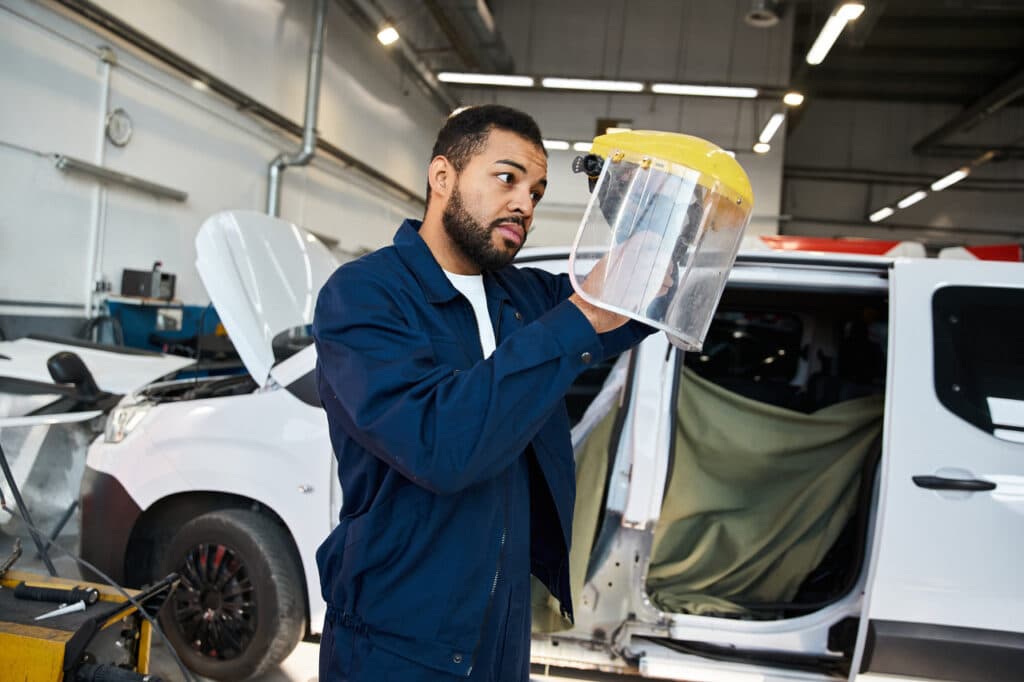As if things weren’t stressful enough.
You were on your way to work, driving the car you finally paid off. Getting through the intersection would have been just fine, but the person turning left didn’t realize a pedestrian was making their way across the crosswalk. They slammed on their brakes, avoiding that incident, but didn’t account for the fact that you were still cruising along at a whopping 35 miles per hour.
Now, after you exchanged insurance info and talked to the police, your insurance company asked for a collision repair estimate to process your claim. If this is your first rodeo or you’re getting back in the ring, here’s your crash course (sorry, too soon) in collision repair estimates.
Key Components of a Collision Repair Estimate
After you find a reliable auto repair shop, they will give you a detailed estimate of what repairs your vehicle needs. While there may be additional repairs, this initial assessment will give you a good idea of the price.
Labor Costs
Labor costs are the hours the mechanics or technicians are working on your vehicle. Depending on the intensity of the work your vehicle needs, this price can fluctuate. As you can probably guess, dent repairs cost a lot less than engine repairs. A good repair shop should include detailed descriptions of the tasks involved in the repair process.
Parts Costs
If you need new parts, those will add to the overall cost. Depending on your vehicle warranty and the availability of parts, repair shops will use one of two types of parts:
- OEM Parts (Original Equipment Manufacturer): These parts are made for your vehicle by the original vehicle maker.
- Aftermarket Parts: These parts are usually less expensive, but can vary in quality. They are often manufactured by the same third-parties that make OEM parts.
Paint and Materials
If your repair includes cosmetic damage, your estimate might include things like paint, primer, clear coat, and other materials. This part of your estimate covers both labor and materials and varies in price based on the extent of the damage.
Additional Services
Your repairs might include additional work, like fixing alignment or paintless dent repair. These services are worth considering, especially if ignoring them will cause negative long term effects.
Types of Damage Considered in the Estimate
When you get a collision repair estimate, a repair shop checks for different types of damage, including the following:
Visible Damage
This includes any external damage that you can see. It usually includes dents, scratches, scuffs, or other body damage. This is usually the starting point to any estimate.
Hidden Damage
Hidden damage refers to problems that are found after additional inspections. These are things not visible at first, like damage to your car’s suspension after a fender bender.
Structural Damage
Anything involving your vehicle’s frame or internal support systems counts as structural damage. These types of repairs can be expensive, but important because they directly affect your vehicle’s safety and performance.
Additional Fees You Might Encounter
Collision repair estimates might also include shop specific fees like:
- Disposal Fees: For removing and handling damaged parts or materials.
- Supplemental Repairs: If additional damage is discovered after work begins.
- Diagnostic Fees: For specific evaluations (i.e. scanning your vehicle’s computer system).
Be sure to ask your repair shop about additional fees to avoid surprises.
How to Read and Understand Your Estimate
There’s a lot to look at when you get your estimate. Starting with these tips can help:
- Look at Itemized Sections: Look at how costs break down into labor, parts, paint, and fees.
- Ask Questions: If certain terms or costs on your estimate don’t make sense, don’t hesitate to ask about them.
- Use Resources: Check out this list of common repair terms to help translate.
Understanding your estimate will help you as you work on repairs and insurance claims.
Why Collision Repair Estimates Vary
If you’ve taken your car to multiple shops and received estimates on far ends of the spectrum, you’re not alone. This might be because:
- Labor rates differ between regions and repair shops.
- Part types impact cost. OEM parts are more expensive than aftermarket parts.
- Shop expertise can influence pricing. Highly specialized or certified shops may charge higher rates.
While it’s tempting to choose the cheapest estimate, remember that quality, expertise, and trustworthiness in a repair shop matters more than cost alone.
Why the Cheapest Option Isn’t Always Best
Choosing your repair shop based only on price could leave you with poor quality parts or labor. Make sure you choose a shop that has excellent reviews, transparency, and certifications, like the I-CAR Gold Class Certification.
It’s also important to work with your insurance company during this process. While they can’t decide which repair shop to use, certain restrictions or in-network options can sway your decision.
Valley Collision Can Help You Take the Next Step with Confidence
It may sound like a lot, but your collision repair estimate will help with navigating insurance claims and your vehicle repairs. And it’s important to choose a repair shop you trust.At Valley Collision, our experts are here to help.
Getting started is simple with our online estimate—just upload pictures of your vehicle’s damage, and we’ll provide a clear, reliable quote. And when it’s time for repairs, our skilled technicians will deliver top-quality care for both you and your vehicle.

